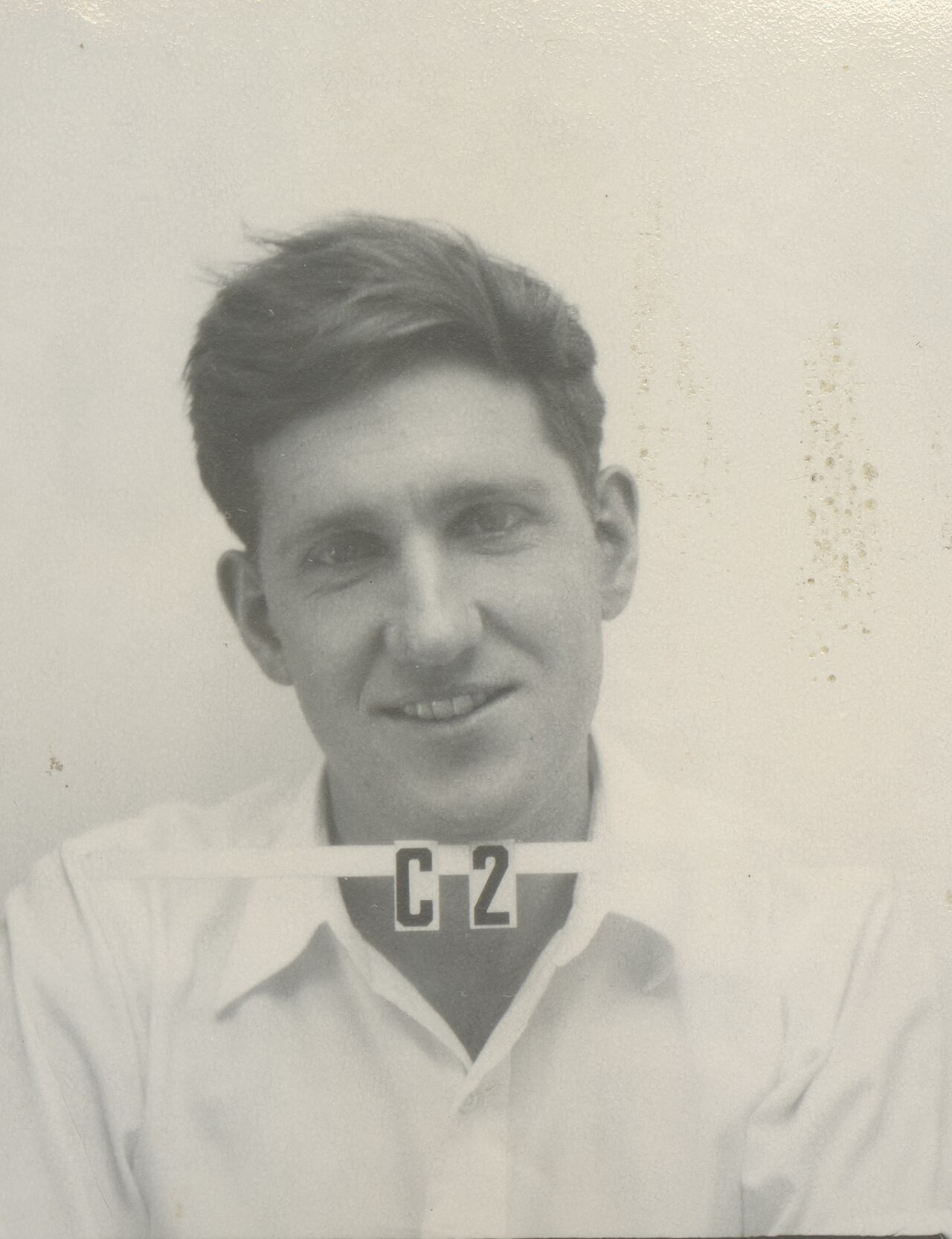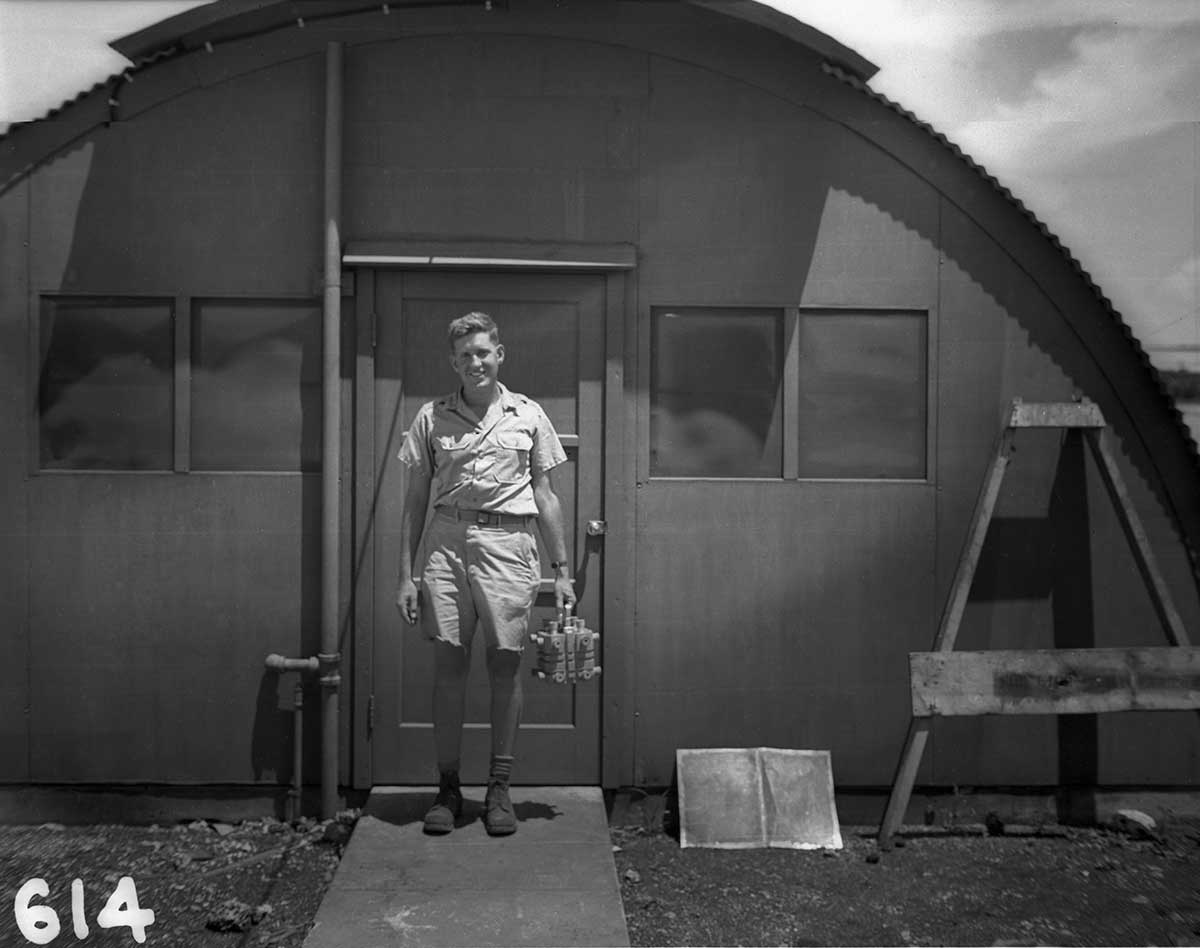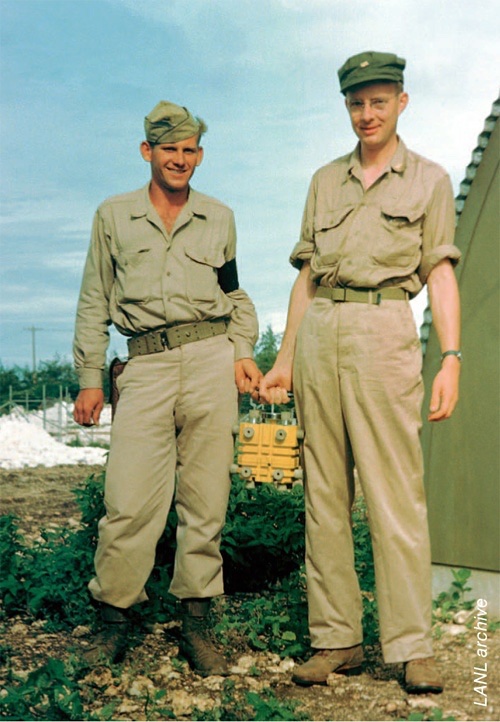 Harold Melvin Agnew (1921–2013) was an American physicist and one of the youngest members of the Manhattan Project. As a student at the University of Chicago, he worked under Enrico Fermi and joined the team developing the first nuclear reactor, Chicago Pile-1, in 1942. Soon after, he was recruited into the Manhattan Project’s Los Alamos Laboratory, where he contributed to the development of the atomic bomb.
Harold Melvin Agnew (1921–2013) was an American physicist and one of the youngest members of the Manhattan Project. As a student at the University of Chicago, he worked under Enrico Fermi and joined the team developing the first nuclear reactor, Chicago Pile-1, in 1942. Soon after, he was recruited into the Manhattan Project’s Los Alamos Laboratory, where he contributed to the development of the atomic bomb.
In 1945, Agnew traveled to the Pacific island of Tinian, where the U.S. Army Air Forces had established the base for launching atomic strikes against Japan. Serving as a scientific observer, he accompanied the crew of the B-29 The Great Artiste during the Hiroshima mission on August 6, 1945. Agnew carried a handheld camera and filmed the mushroom cloud and aftermath of the bombing, creating one of the few color motion picture records of the event. Three days later, on August 9, he again flew aboard The Great Artiste, documenting the Nagasaki bombing in the same way. His footage later became an important historical record of the attack, although this has been amended and that it was Agnew’s camera (a Bell & Howell) only and that the tail gunner, Sgt. Albert “Poppy” Dehart, actually shot the historic film.
After the war, Agnew continued a distinguished career in nuclear science. He worked at Los Alamos for decades, eventually serving as its third director (1970–1979), where he oversaw weapons development and research during the Cold War. His unique eyewitness perspective on Hiroshima and Nagasaki gave him a lifelong, sometimes controversial, role in debates over nuclear weapons.
Agnew maintained that no new U.S. nuclear weapon design could be certified without nuclear testing, Agnew stated, “About three-quarters of the U.S. nuclear arsenal was designed under my tutelage at Los Alamos. That is my legacy.”
During his later years, Agnew was interviewed many times about his stance on the conflict and the usage of the bombs on Hiroshima and Nagasaki. In 2005, Agnew held a discussion in Hiroshima with bomb survivors who demanded an apology, to which he responded “Remember Pearl Harbor!” In another interview, Agnew said “There is nothing to apologize for. This is exactly why the Chinese are still upset with them. Many Japanese still refuse to take responsibility for what they did, for starting that war. They can point at us. But believe me, they did some awful bad things. We saved Japanese lives with those bombs — an invasion would have been worse.”
In another interview, he was asked how he felt about the dropping of atomic bombs on Hiroshima and Nagasaki. Agnew replied, “Oh, yeah, there is no difference to me. It’s not a copout, but we say that by ending the war so quickly, and it’s certainly true, we saved a lot of lives. Saved a lot of our lives, and then of course we need to be saying saved a lot of Japanese lives. Saved a lot of Chinese lives too. They were losing about 30,000 a week. The Japanese were just butchering them starting in Nanking in 1937. But really, I wasn’t interested. My objective was not saving lives, although that was clearly a prime factor as far as President Truman was concerned. But it was just to beat those bastards—that’s all.”
Motion picture film, 1945 – Contents
Sign: “American Cemetery / Tinian Island”
Color Footage (16mm): 000-007, Timecode (BSP): 01:00:00:00
Flagpole, Tinian Island
Footage (16mm): 007-013, Timecode (BSP): 01:00:18:03
Panoramic shots of North Field, Tinian Island
Footage (16mm): 013-041, Timecode (BSP): 01:00:28:07
Hiroshima atomic cloud
Footage (16mm): 041-054, Timecode (BSP): 01:01:15:13
Hiroshima atomic cloud
Black and White Footage (16mm): 054-059, Timecode (BSP): 01:01:37:25
“Great Artiste” (no. 89) and crew after return from Hiroshima mission
Black and White Footage (16mm): 059-090, Timecode (BSP): 01:01:44:25
“Enola Gay” (no. 82)
Black and White Footage (16mm): 090-092, Timecode (BSP): 01:02:36:10
Hiroshima atomic cloud
Black and White Footage (16mm): 092-110, Timecode (BSP): 01:02:39:08
Aircraft en route to Nagasaki; shots of “Bock’s Car”
Black and White Footage (16mm): 110-131, Timecode (BSP): 01:03:09:20
Nagasaki atomic cloud
Color Footage (16mm): 131-159, Timecode (BSP): 01:03:45:08
Nagasaki burst and cloud
Color Footage (16mm): 161-211, Timecode (BSP): 01:04:35:02
Nagasaki atomic cloud
Color Footage (16mm): 211-260 (end), Timecode (BSP): 01:05:58:08






